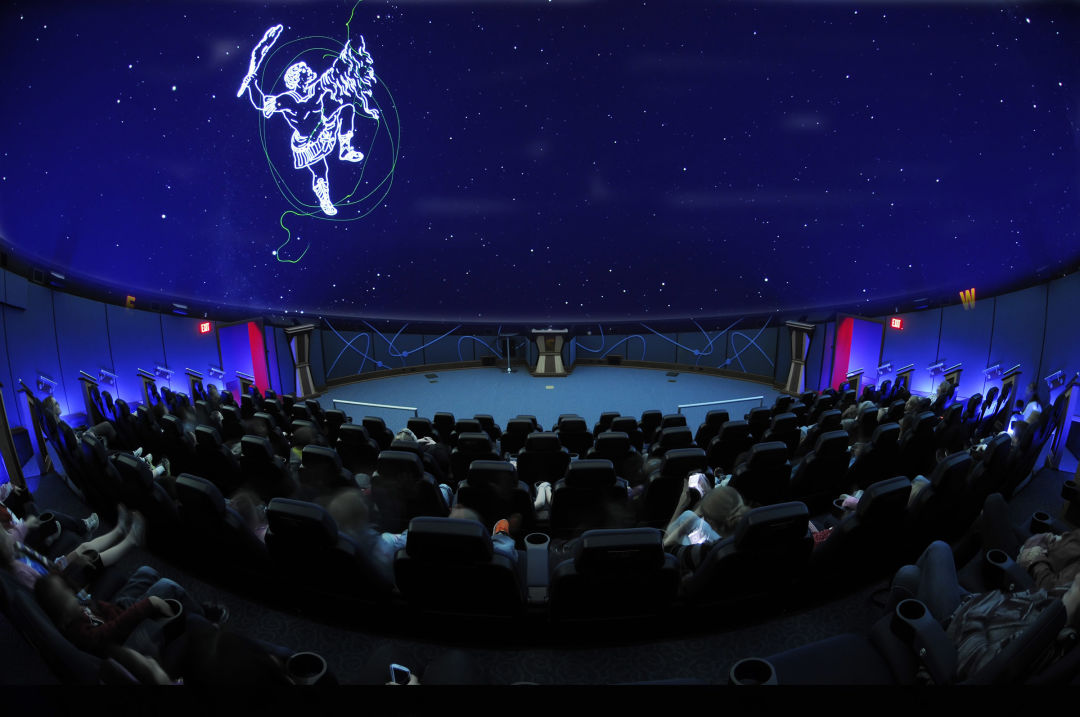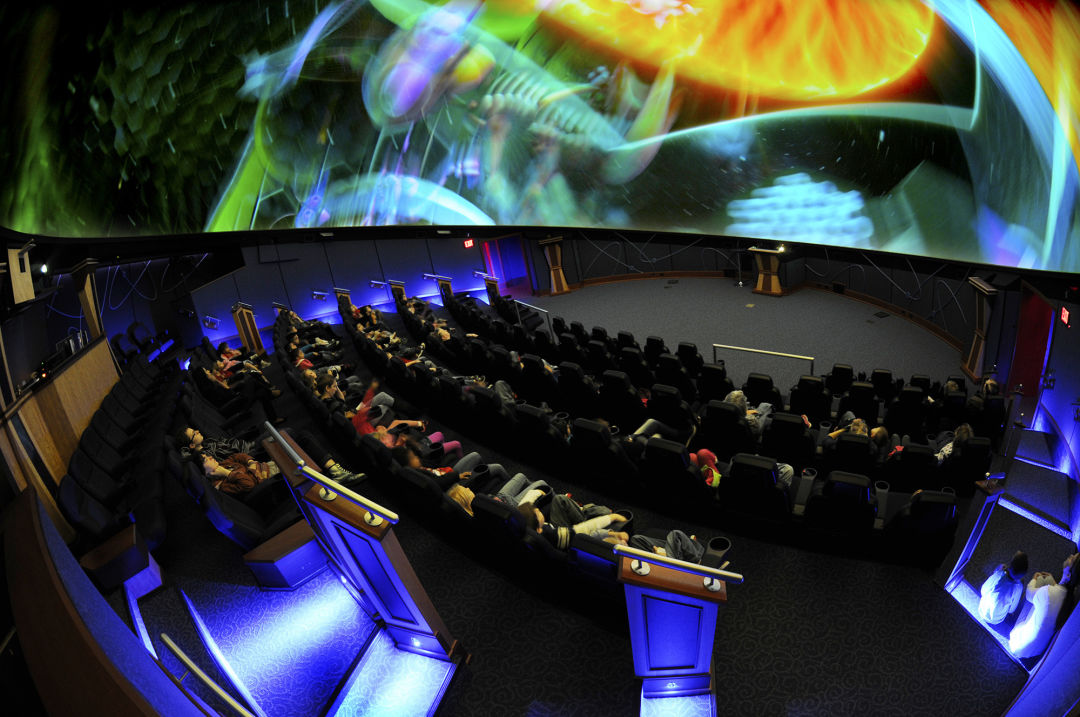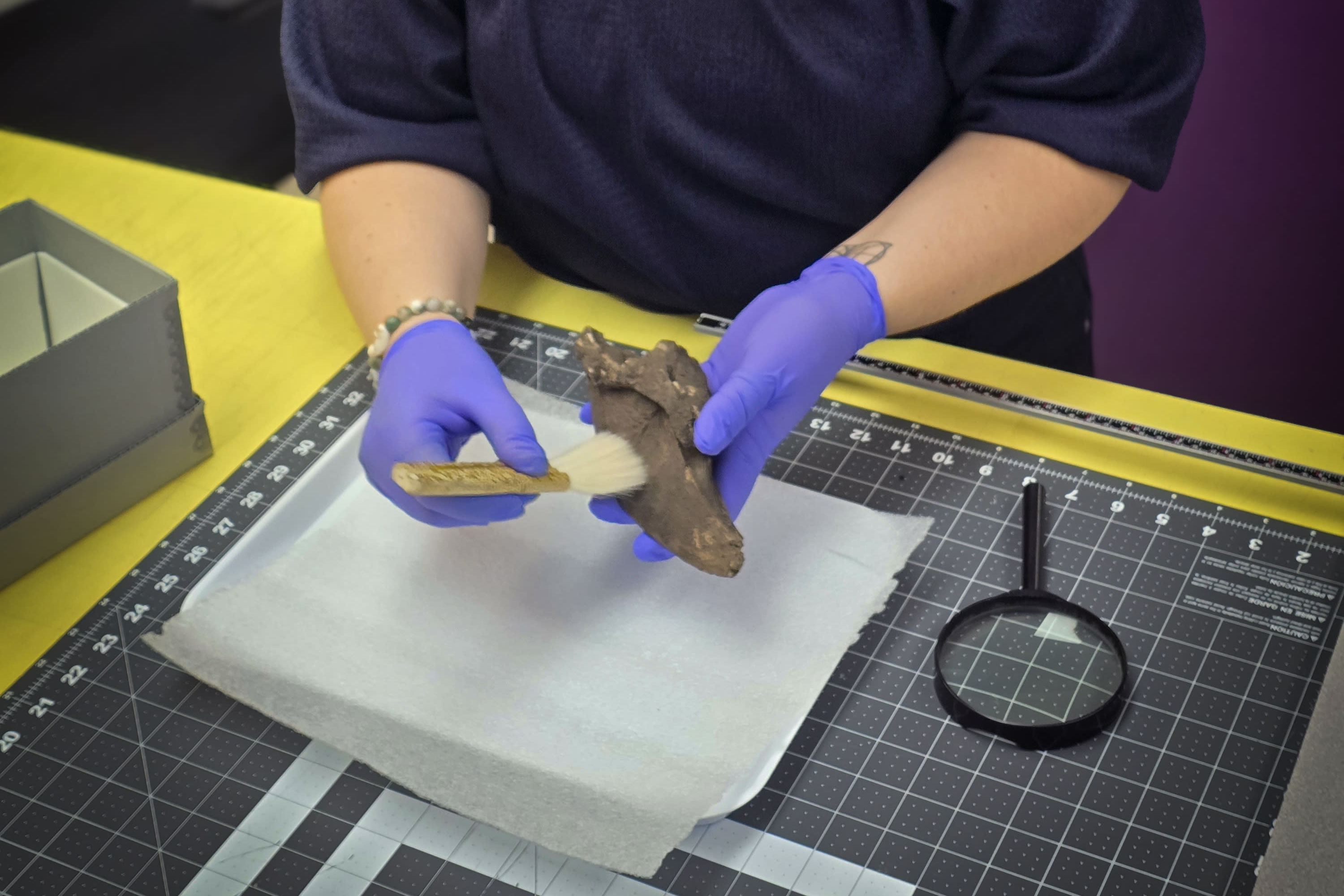Explore the Universe in the Bishop Planetarium at the South Florida Museum

The constellation Orion projected on the dome in the Bishop Planetarium.
Image: South Florida Museum
The first two things you meet when you enter the Bishop Planetarium at the South Florida Museum are FeNi, the 4.5-billion-year-old meteorite, and Howard Hochhalter, the planetarium manager.
In the planetarium lobby, Hochhalter runs a magnet along the pedestal holding FeNi, collecting debris from the meteorite to give to the kids and parents surrounding him, telling them that this is the oldest thing they will ever touch. FeNi is named after the periodic table symbols for iron and nickel, and rests on a pedestal in the lobby for people to admire and touch its cool, bumpy surface. A little girl eagerly holds out her hands out, staring down at the meteorite particles in her palm in wonder.
Hochhalter also answers questions from guests and gives anyone around him more information about the meteorite or the field of astronomy. It's been a few years since I've taken an astronomy class, but his factoids bring back memories of learning about our mysterious universe, and also make me wonder what I'll see in the upcoming show in the planetarium, titled Dark Universe.
After a few minutes, Hochhalter disappears into the planetarium, where he'll introduce Dark Universe.
The 25-minute show, narrated by astrophysicist Neil deGrasse Tyson, starts 100 million light years away from Earth and transports the audience through the Milky Way Galaxy until settling on the Mount Wilson Observatory in California. The show highlights the crucial discoveries that have shed light on the structure and history of the universe, while also showing spectacular images of space. I'd often hear choruses of “ooh”s and “aah”s from the kids in the audience.

The monthly Stelliferous Live Star Talk in the Bishop Planetarium.
Image: South Florida Museum
Dark Universe is just one of the six daily shows shown in the Bishop Planetarium. Others include Journey to the Stars, This Month’s Skies Live, Passport to the Universe, Tour of the Universe Live and Perfect Little Planet. The daily live star talks are led by Hochhalter.
Hochhalter says that with the new technology in planetariums, the audience can have an “off Earth experience,” and see much more than just stars in the sky. “We can show them virtually everything astronomers have mapped from our solar system all the way out to the observable edges of space,” he explains.
The planetarium also puts on special shows, including SpacePark 360, a monthly Rock Hall of Fame, a holiday Let It Snow! show and a monthly Stelliferous Live Star Talk led by either Hochhalter or planetarium director Jeff Rodgers. There's also weekly family program called Kid Space every Saturday morning, focusing on a particular subject for a 14-week period. (The current subject is dwarf planets.)
The Bishop Planetarium’s first show begins at 11:45 a.m. and the last one begins at 3:15 p.m. The South Florida Museum also houses the Parker Manatee Aquarium and a natural and cultural history museum.
Planning on going? You can find more information on tickets and show schedules here.



